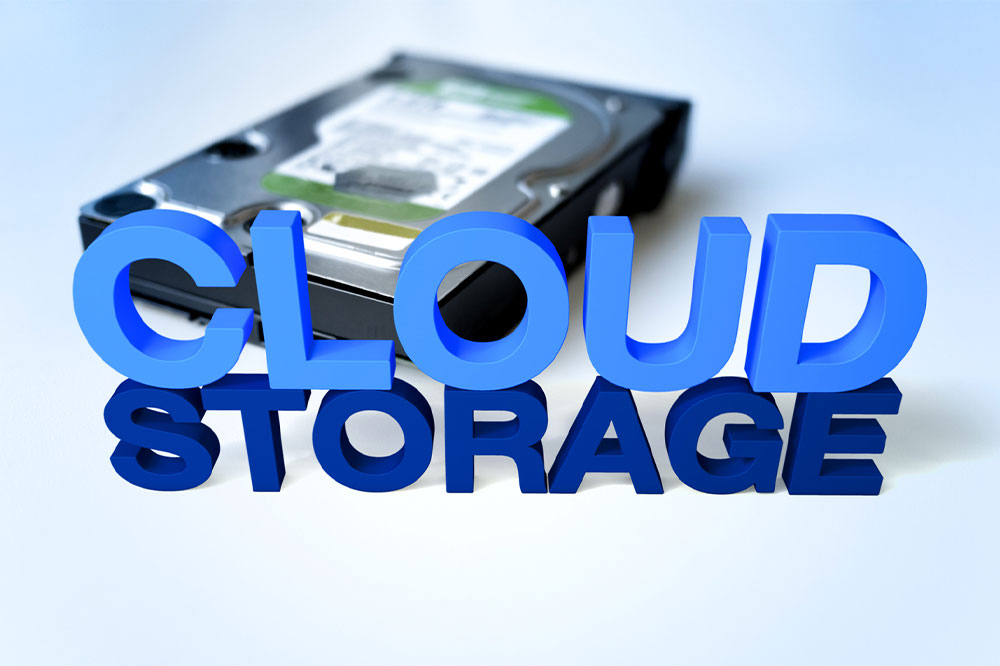Cloud Storage – Types, Benefits and Drawbacks
Cloud storage is the most popular and efficient way to store, access and review data. It is a secure, reliable, and cost-effective solution that allows the business to store important files on an offsite server instead of a computer. Cloud file storage also lets one access the files from any location across the world, making it a convenient business tool. Many services offer business organizations features like storing data, archiving data, and DR services.

Looking for a complete cloud storage guide? Look no further. We’ve compiled all the information you need about its process, types, benefits, and drawbacks.
What are the different forms of cloud storage?
Cloud storage is a relatively new concept, but it is already revolutionizing the way data is stored, managed, and shared.
Cloud file storage comes in many different forms:
Web-based
A web-based service allows the organization to store and access files from any internet-connected device. This type of cloud storage is usually free but can be slow when accessing large files. It also doesn’t provide much security for the data.
Remote backup
Remote backup services allow one to create copies of all the files on an external hard drive stored in a secure location outside the home or office—typically in another city or state. This type of cloud file storage provides excellent protection against fire or theft loss, but it comes with an additional cost.
Dropbox
Dropbox is a file hosting service that allows users to store their documents and other important files on its servers and access them from any location with an internet connection. Users can pay for additional storage space if needed (depending on the number of documents).
What are the benefits of using cloud storage in businesses?
Here are some reasons why a business should consider using cloud file storage.
Reduced capital expenses
Cloud service providers make it easier for businesses to manage their digital assets because they offer simple user interfaces that allow anyone to upload content from one location, rather than installing expensive hardware or software at every location where information needs to be stored. This can significantly reduce business capital expenses and offer many other benefits such as security and better disaster recovery capabilities.
Data redundancy and disaster backup
Cloud storage can also be used for data redundancy and replication. For example, if an employee is not available due to a vacation or an accident, having the data backed up in cloud-based storage services will enable the management to access certain required files and data. In addition, due to fire or other unprecedented natural disasters, accessing the files through the services can help recover the lost data.
Easy document upload
When a file is uploaded on the cloud, it directly gets saved on the server. These servers can be accessed from multiple devices by various users through the Internet. Instead of email, one can use cloud file storage in businesses and upload all the needed files at once. This makes file sharing easy and convenient. One does not need to upload or share the file on emails; a direct link of the file can be shared for access. This is also helpful if there are multiple people working on projects from different locations or teams within a company.
What are the major drawbacks of a cloud storage system?
Cloud storage is a convenient and cost-effective way to store data, but it has some drawbacks that users should be aware of to make an informed decision before choosing cloud-based storage services.
Cloud complexity
A cloud file storage system is easy and intuitive, but that isn’t always the case. If one has to deal with multiple services and programs to access the files, then it’s not a user-friendly tool.
An excellent example is Google Drive: if you want to view your files on the web, you’ll need to install the Google Drive app for Chrome. If you want to view them on a mobile device, you’ll need to download the app from the Apple App Store or Google Play Store. And if you want to view them on the desktop, you’ll need to install Google Docs too! This can get very confusing for users who aren’t comfortable dealing with these technical variations at once—especially when all they want is a simple way to access their personal and business files.
Data movement challenges and security
Data movement is a significant drawback of a cloud file storage system. In the cloud, many different types of data need to be moved around, and the current infrastructure is not set up to handle this effectively.
Another challenge with moving data through a cloud file storage system is security. When using cloud -storage services, one must be careful while storing confidential information of the company or clients. There might be high chances of malicious activity, cyber theft, or cybersecurity attack.
Cloud storage is a complex topic, with many options and variables to consider. Yet it has gained prominence over traditional storage tools. As business organizations need a big IT infrastructure, selecting the right cloud storage services can be a relief. Comparing the benefits and features of various cloud options to meet the company requirements is also equally important.















